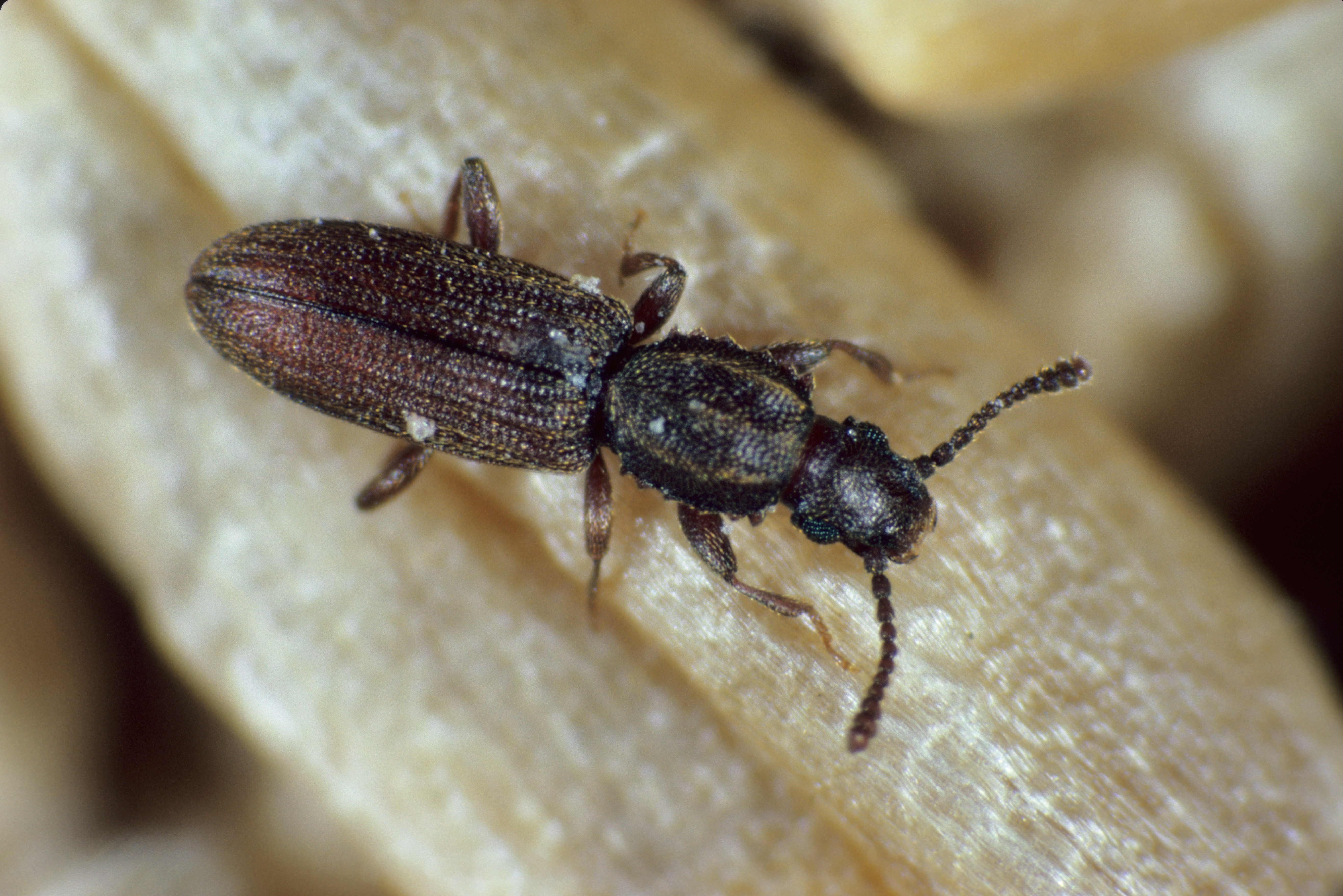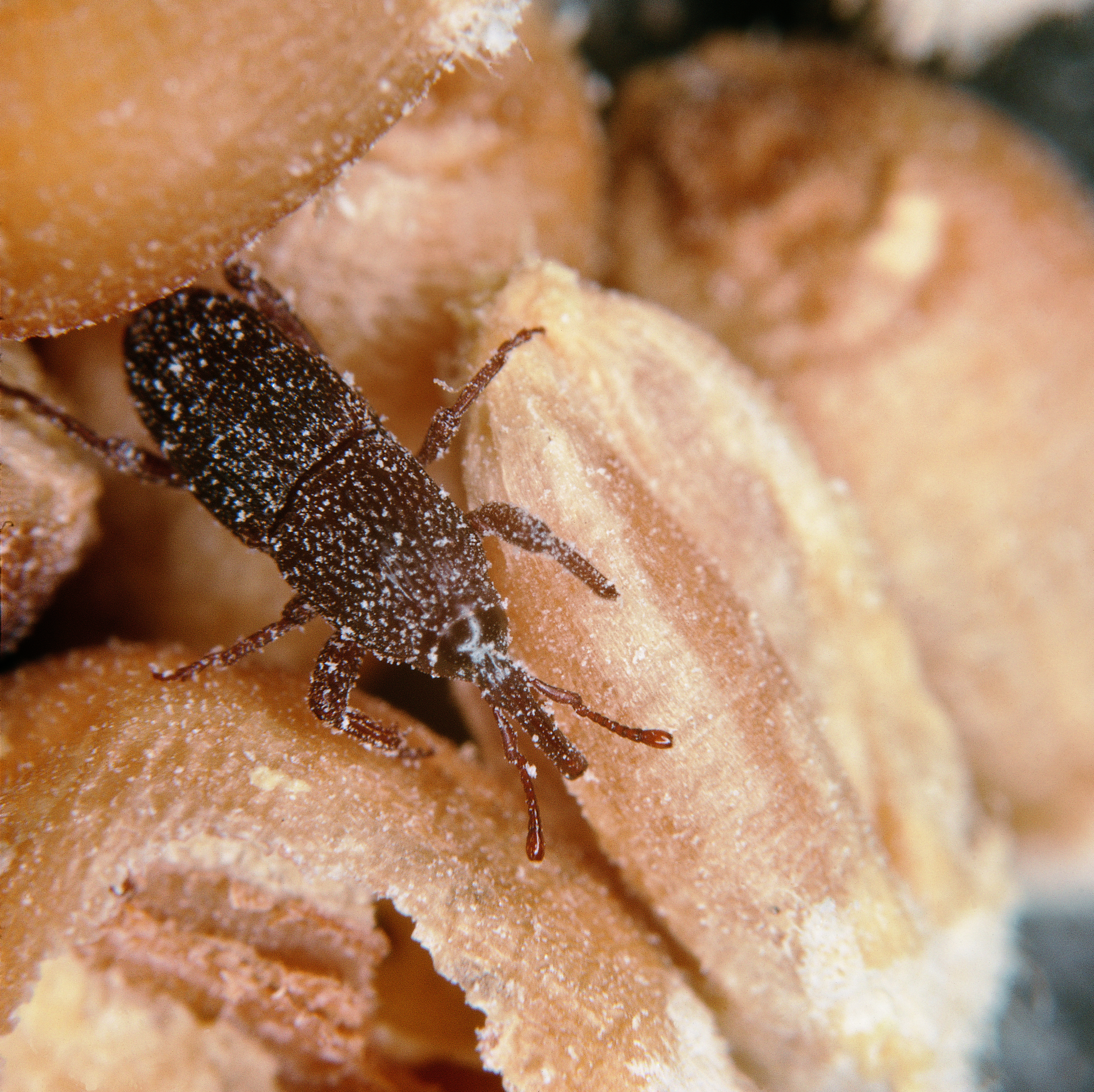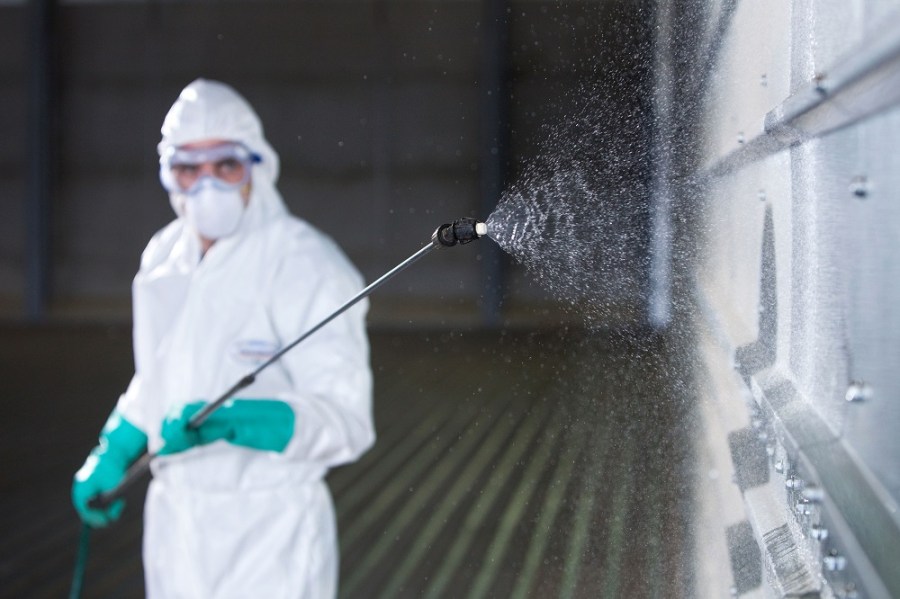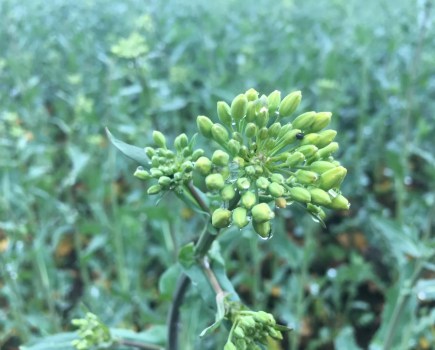Blood, sweat and tears go into growing a quality crop but premiums can still go for a burton if storage goes awry. CPM gets advice on staying on top of pests.
By Rob Jones
The cost of grain rejection due to pest damage in store can reach £50/t – including loss of premium, according to grain-supply expert, Richard Jenner of Openfield. He points out the raft of consequences to delivering damaged grain to a buyer.
“It doesn’t take many costly loads to erode the overall contract value. Rejections could result in a contract shortfall, meaning further costs. In some circumstances, rejected loads may not be re-scheduled because there’s no available window, causing the potential for a contract not to be fulfilled,” he explains.
With large investments going into crop production and protection in the field, stored grain can be shut away and forgotten about after harvest. But Ken Black, Bayer rural hygiene manager, stresses that attention to detail while grain is in storage can protect against losses.
“There can be big implications if grain store pests aren’t prevented. The easiest and most cost-effective way to avoid damage is by thoroughly cleaning grain storage areas, coupled with an appropriate treatment if necessary,” he advises.
Pest lifecycle
To minimise the likelihood of rejection, he believes a knowledge of the pests’ lifecycle can help ensure that any store treatments are cost effective and efficient.
Grain store pests are divided into two categories: primary and secondary. Primary pests, such as grain weevil, have the ability to infest otherwise undamaged grains. While secondary pests don’t attack the grain itself, they feed on the damaged pieces of grain and dust left behind by the primary pests, he explains.
“The most common secondary pest found in UK grain stores is the saw-toothed grain beetle. Although they don’t damage the actual grain, it’s important to have an awareness of them because any increased pest activity within the grain store can cause a rise in temperature. A heavy infestation can lead to grain sticking together, developing mould and even sprouting.
Primary pests
“All grain store pest lifecycles are temperature dependent – the warmer it is, the faster the lifecycle and the greater the number of pests. So it’s important to keep grain as cool as possible, ideally below 13°C,” he says.
The grain weevil is one of the most commonly found and damaging primary pests. They can only breed when the temperature is 13-35°C and the moisture content of the grain is above 9.5%. So it’s important to keep grain as cool and dry as possible, he emphasises.
“Lots of farmers will put their grain through a dryer to reduce the moisture, but this will increase its temperature. It’s surprising how well grain holds the heat. To lower the temperature of the grain after drying, I’d recommend blowing cool air through it afterwards where possible.”
The female grain weevil bores a small hole into the centre of each piece of grain, placing an egg inside of it and sealing the hole with a plug of saliva.
“If the temperature is between 18-20°C, the eggs will hatch 8-11 days later into small, white, legless larvae that feed on the endosperm inside the grain. The damage is invisible to the human eye throughout this period,” explains Ken Black.
Once the larvae have fed on the endosperm, they develop into adult weevils. It’s only at this stage that they emerge from the grain, six to eight weeks after hatching, ready to start the lifecycle again.
“If the store-keeper isn’t actively checking temperature and moisture of grain, as well as monitoring for pests using sticky traps, there could be a huge insect problem that’s hidden inside the grain for weeks. Within its nine-month lifespan, each female can lay over 200 eggs, so the problem can quickly escalate.”
Secondary pests
The saw-toothed grain beetle only breeds in a specific temperature range of 17.5-40°C, with the lifecycle speeding up as the temperature increases. At 20°C this can take from 12-15 weeks, but at 32-35°C it can be as short as just 20 days, he explains.
“The female saw-toothed beetle can lay up to 400 eggs in her lifetime, which can last for up to 10 months. The eggs are laid among or adjacent to the damaged grains and will hatch into larvae at 20-23°C after 8-17 days. The larval stage lasts for 4-7 weeks, and after 2-5 moults the beetle is fully grown.
“Both grain weevils and saw-toothed beetles are sufficiently cold-hardy to overwinter in the cracks and crevices of unheated, empty grain stores – especially among pieces of damaged grain or dust, which they will happily live on until the following year when the new grain comes in.”
Grain store cleaning
Management of infestations once the pests are in the grain can be tricky, so Ken Black stresses the importance of thorough store cleaning ahead of harvest. It’s recommended to do this as early as possible (up to two months before storage) to allow plenty of time for treatment, if needed.
“Cracks, crevices, roof spaces and ventilation tunnels shouldn’t be forgotten as these are the areas where pests are likely to overwinter. Ensuring these spaces are grain and dust free is an essential step to success.”
Once the empty store has been fully cleaned down, he recommends using sticky pheromone traps to monitor for any pest presence.

Ken Black stresses the importance of thorough store cleaning before harvest.
“Placing these at 5m intervals around the store, in corners and at wall-floor junctions, should give an accurate indication as to whether chemical application is required to remove the pests.”
If there’s a pest presence in the monitoring traps, then deltamethrin can easily be used to treat the fabric of the grain store using a knapsack sprayer. The optimum time to do this is six weeks ahead of store loading, to target the pests at every stage of the lifecycle.
Smoke generators can provide quick insect knockdown after cleaning or just ahead of harvest. There are also organophosphate-based insecticides available to apply, but some pests have developed resistance to these products.
“It’s important to remember that any chemical treatment should be applied at the full rate, as stated on the label. Misapplication of products can lead to resistance issues, not to mention being ineffective on the pests it was intended to kill.”
He goes on to explain that even if the store has been rigorously cleaned and treated, there’s still a small chance that pests could infest the grain once it has been loaded into the store.
“It’s important to continue to monitor insect activity, temperature and moisture within the grain. Remedial action can then be quickly taken, using cooling or fumigation to halt the pest infestation before damage occurs.”
If an insect infestation is allowed to take hold, it’s hard to regain control once the grain is already in storage. It’s possible to treat remedially with deltamethrin once, but this will only kill the adults and not the eggs inside the grain.
Richard Jenner adds that another option for infested stored grain is to redirect it into an interim storage facility, where it can be treated. “However, this will cost approximately £4.70/t to resolve the problem.”
Top tips for grain store hygiene
- Clean down the store as early as possible – up to two months before storage. If treatment is required, this should be done six weeks ahead of harvest to target pests at every stage of their lifecycle.
- It’s important to clean and treat the store thoroughly, so that the cracks, crevices and roof spaces which harbour pests aren’t missed.
- Monitor for pests before and throughout the grain storage period – it’s much easier to stop them before they take hold.
- Ensure that any insecticide is applied according to the label. Inaccurate applications are linked with increasing incidences of resistance and won’t work.
Saw-toothed grain beetle

- 5 to 3.5cm long.
- Dark brown in colour.
- Six teeth along the side of each of the prothorax (first segment of the body).
Grain weevil

- 3 to 4mm long.
- Dark brown to nearly black in colour, with a shiny appearance.
- Eight segmented antennae.
- No wings, so are unable to fly.




